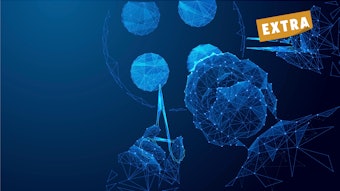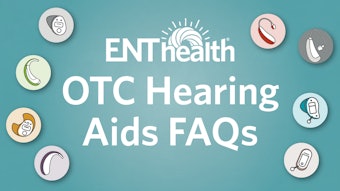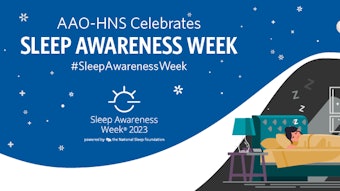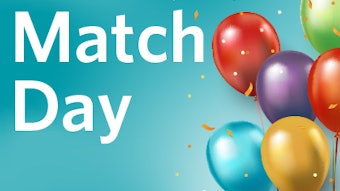Tech Talk: ChatGPT for the ENT (?)
Artificial intelligence (AI) is here to stay and has already crept into everyday life.
Mike Robey, MS, AAO-HNS/F Senior Director, Information Technology

What Is ChatGPT?
ChatGPT has hit the Internet by storm since its November 2022 launch by OpenAI, a California-based AI research and development company. As the first four characters in its name imply, ChatGPT is a conversational interface. Think of it as a search engine on steroids. You enter a question; ChatGPT generates a conversational response. If a follow-up question is entered, it remembers the context of the previous question to deliver a more clarified reply. (GPT stands for generative pretrained.)
The underlying technology behind ChatGPT is not new. What makes it unique is its ability to understand natural language and produce conversational results. The size and processing of its input buffer also sets ChatGPT apart. This is what gives ChatGPT the ability to create results that appear to be within the context of the current conversation. It is very much a real-life example of the Turing test: Can a computer respond back in such a way that a person cannot determine if they are talking to another person or a machine?
Like OpenAI’s other well-known product, DALL-E 2, which produces artwork based on input text, ChatGPT is generative AI. It produces its own content based on patterns created when ingesting vast amounts of content from the Internet.
Ethical matters about ChatGPT’s use should be addressed before widespread organizational adoption. Copyright infringement is an obvious concern since neither ChatGPT nor DALL-E 2 cites the original source of their generated content. Below are other ethical concerns over ChatGPT’s use that come to mind:
- Widespread distribution and belief of false information
- Increased plagiarism and cheating on exams
- Increased inability to identify deep fake photos and other content
- Who owns and who is responsible for the generated content
Based on the above concerns, one might ask, “Why not just use a search engine and then consult reputable sources?” This is a valid point, for sure. ChatGPT’s quickness in responding with plausible sounding answers may drive usage before ethical issues can be addressed—and therein lies a major concern.
AI ethics is an important subject area but may have little impact on the progression of the technology. Setting ethics aside for now, let us transition to consideration of use cases for a conversational search engine.
Use Cases
A precursor before getting into use cases is understanding that an AI language model is only as good as the data it consumes, and for now, the data ChatGPT ingests are from the Internet as of around 2021. Only OpenAI knows what ChatGPT consumed. However, ChatGPT may still be helpful in creating and refining ideas in addition to many other use cases such as:
- Offering Chatbot, website self-help feature
- Helping with repetitive tasks, writing emails, letters, compiling clinical notes
- Developing templates for legally binding documents and agreements
- Rephrasing clinical statements for better audience understanding
- Developing process improvement scenarios
- Assisting with insurance coding
- Improved software development and bug testing scenarios
- Creating Subjective, Objective, Assessment, and Plan (SOAP) notes
This is not meant to be an exhaustive list but should help stimulate thoughts as to how ChatGPT might be used.
Another potential use case for ChatGPT (or its next generation) might be in telemedicine. Setting aside Health Insurance Portability and Accountability Act (HIPAA) concerns, this would start with a patient phoning in and describing their ailment(s). The physician’s office would then use voice-to-text to feed the patient’s word salad into ChatGPT, where only a clinician sees the generated response.
Contained within what the patient reports are golden nuggets of information. ChatGPT would be used to mine these golden nuggets and produce a preliminary starting point for possible treatment. A clinician will have to review the response for accuracy, but if this starting point shaves 10-15 minutes off triage and/or appointment time, ChatGPT may be worth it.
I posed a question to ChatGPT on how it would improve telemedicine. To summarize, it indicated it could help improve efficiency and accessibility of telemedicine by automating route tasks and providing quick and accurate information to patients. I then followed up that question with, “If ChatGPT doesn’t cite its information, how does the patient know the information is accurate?”
Again to summarize the response, I was pleased to see the acknowledgment that ChatGPT is not a substitute for professional medical advice, and patients should always verify any information provided by ChatGPT with a licensed healthcare professional. Additionally, it recommended that the information provided by ChatGPT be used in conjunction with a knowledge base of verified and up-to-date medical information.
Using ChatGPT may become as common as using a search engine. Prompt engineering may become the latest skill set for research and development purposes. Learning how to phrase the questions fed into ChatGPT as well as how to determine the accuracy of its responses may be the new office craft. One will need to learn how to play with ChatGPT to get the most benefit from it and determine what it can and cannot do.
Become Familiar with ChatGPT
Here is a quick way to get started familiarizing yourself with ChatGPT:
- Search YouTube for how someone in the healthcare field uses ChatGPT. View videos to get an idea of how others use ChatGPT. Be skeptical, but keep an open mind.
- Go to OpenAI at https://chat.openai.com/auth/login and create an account. It’s free for now.
- Start having conversations with ChatGPT to get a better understanding of what it returns and to refine your ability to engineer your prompts.
- Be sure to check out the resources for this article for further reading and viewing suggestions.
- Join the conversation on ENT Connect on Artificial Intelligence and others (member login required).
Microsoft recently invested $10 billion in OpenAI and has announced plans to include ChatGPT in its developer tools. Expect to see components make their way into Microsoft products. Conversational AI is here to stay. The question is how we are going to learn to use it and know when to fact-check its machine-generated results. Unless you are familiar with the subject matter, you have no way of knowing if the information coming back is accurate or not. The danger is the generated results sound plausible, but all feedback should be vetted against a reliable source. ChatGPT is good at generating ideas or a starting point for further investigation. And this may very well be its strength.
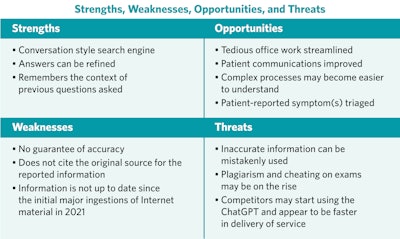
View larger here



